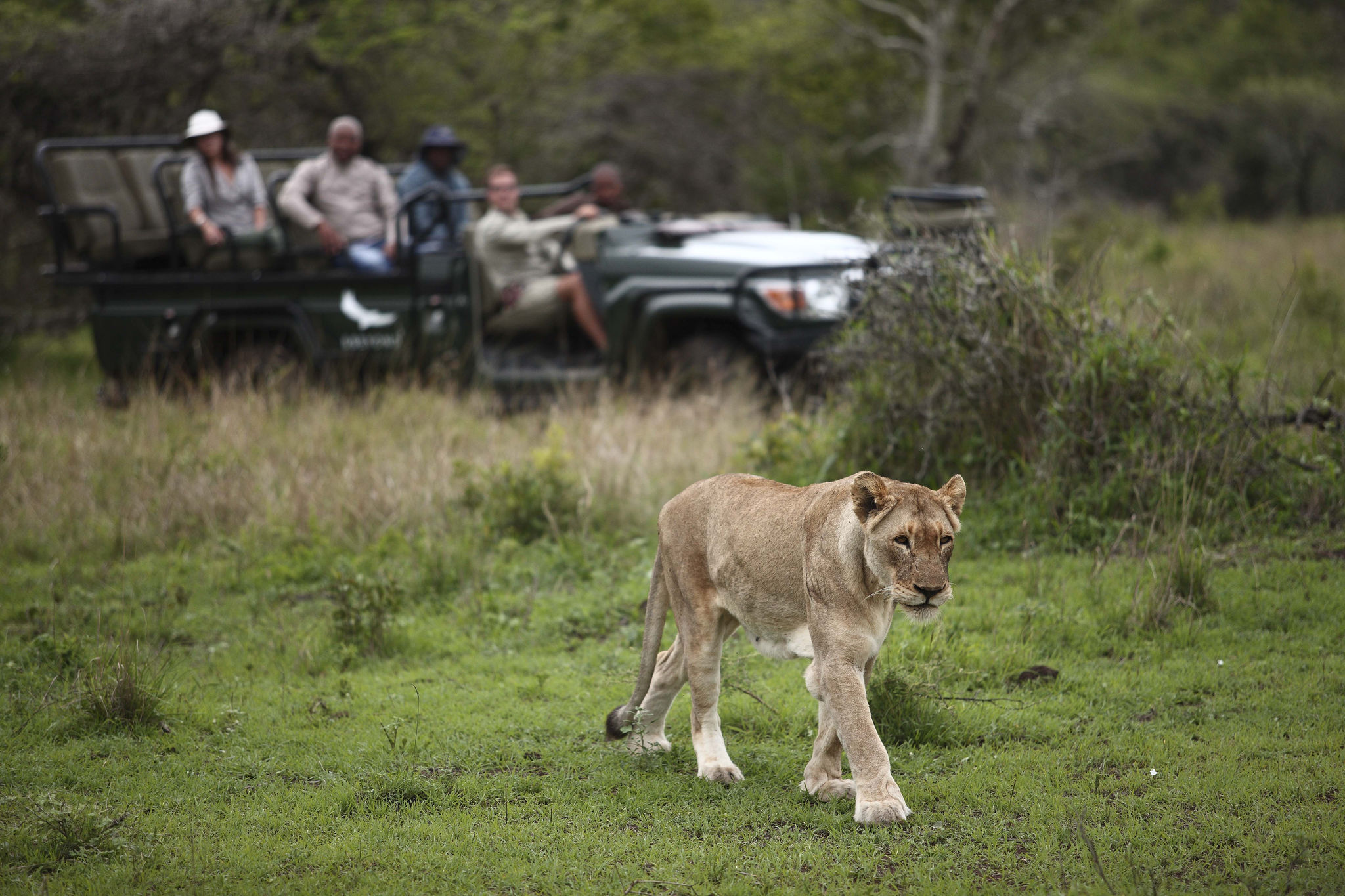When considering where to go on safari, one of the main deciding factors is the wildlife you will be able to see, so what animals can you find at Phinda Private Game Reserve?
Aside from the Big 5 that thrive here, we’ve compiled a list of all the reserve’s other star animals that steal the show!

-
Cheetah
Phinda Private Game Reserve offers prime cheetah sightings as it has South Africa’s fourth-largest cheetah population.
However, the fastest mammal on earth is fast disappearing. According to &Beyond Phinda, there are only an estimated 6,700 adult cheetahs left in the wild. Together with The Endangered Wildlife Trust (EWT), they work to preserve this species within fenced reserves by tracking and maintaining metapopulations.
As a result of their now thriving cheetah population, they also have the unique ability to translocate these animals to other areas where they are scarce, thereby strengthening and diversifying genetic pools.

Cheetah with cub. -
White and black rhino
You will be able to see both the white and black rhino at Phinda Private Game Reserve, which cannot necessarily be ensured elsewhere.
The statistics say it all. More than 7,000 rhinos have been poached in South Africa over the past ten years. To give you an idea, that’s a rhino killed every eight hours.
Their project ‘Rhinos Without Borders’ aims to fight against this by translocating rhinos from poaching hotspots to low-risk areas, as well as safely dehorning them to deter poachers. If you stay at Phinda, you will have the opportunity to partake in some of these conservation activities.

Endangered white rhino in Phinda. Credit &BeyondPhinda -
Loggerhead and leatherback turtles
Every year during summer, two of the world’s largest ocean turtles shuffle out of the Indian Ocean and make their way to the warm, sandy beaches of Sodwana Bay to lay their eggs.
As an indication of their size, the leatherback can weigh up to 700kg, and the loggerhead reaches about 160kg.

Loggerhead turtle swimming at Phinda At Phinda, they offer seasonal ‘turtle nesting adventure tours’ from November and January, where you will get to see this breeding phenomenon.
It will certainly be a momentous experience that will leave you in turtle awe!

Leatherback turtle on the beach -
Hippos
Did you know that hippos are responsible for more human deaths than any other large animal in Africa? Well, you can admire these creatures (from afar!) at Phinda.

Hippo showing off his impressive canine teeth. Photo: Garance Chassaing -
Humpback Whale
These majestic creatures can grow up to about 18 metres in size and weigh approximately 40 tons, so watching them as they breach playfully in the Indian Ocean is something worth your whale.

Humpback whale breaching. Photo: Thomas Kelley -
Whale Shark
Is it a whale or a shark? Well, it’s a whale shark! Given its immense size, the word ‘whale’ is an apt description and, although they are sharks, they feed more like whales as they are ‘filter feeders’.
Don’t miss the opportunity to swim alongside these gentle yet frighteningly massive animals!

Whale shark swimming with fish. Photo credit: ZacWolf -
Suni antelope
Aw, how adorable? This rare, tiny Suni antelope can be seen at Phinda. Only 30-45cm in height at the shoulders and weighing about 5kg, these shy creatures will freeze if they sense danger, camouflaging them in the wild.

Rare suni antelope. Photo: &Beyond -
Crocodiles
One of Africa’s best ambush predators, you can see the Nile crocodile stalking their prey in the water and on the riverbanks.

Crocodile lurking. Photo: Sean Brookes
Where is Phinda?
Located close to the Indian Ocean coastline of the KwaZulu-Natal province in southern Africa, Phinda Private Game Reserve is well-known for its ‘Seven Worlds of Wonder’ habitat, ranging from wetland to grassland, woodland to forest, with marshes, pans, mountains and rivers in between. It is thanks to this unique and diverse environment that this range of varied creatures call it home.
If you stay at one of Phinda’s six luxury lodges, you can enjoy twice-daily game drives that start early in the morning and continue after the sun has set so that you can get a glimpse of all the animals in their natural habitat.
How to Get to Phinda
Daily direct flights from Johannesburg to Phinda or a three-hour road trip from Durban will get you there.
It’s also easy to combine your trip with one to Sabi Sand, the Timbavati, or Cape Town.
When to Go to Phinda
Good news, Phinda is an all-year-round destination thanks to its delightful subtropical climate! The prime time to visit, however, is from March to September.
I want to go! What do I do now?
If you would like to go see these magnificent animals, contact our friendly travel experts to start planning your African adventure!
You might also like these blogs:

